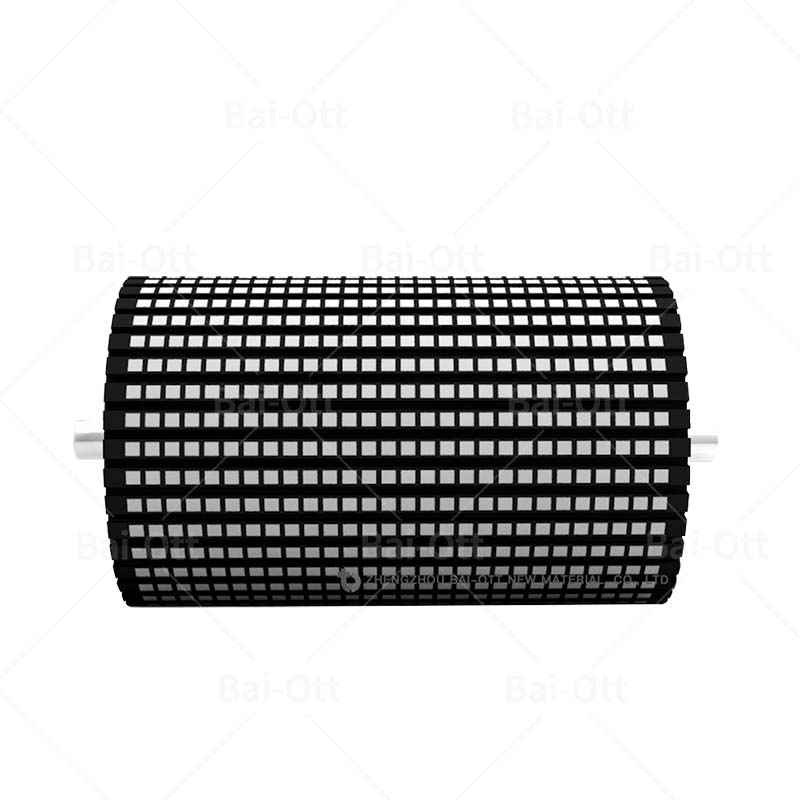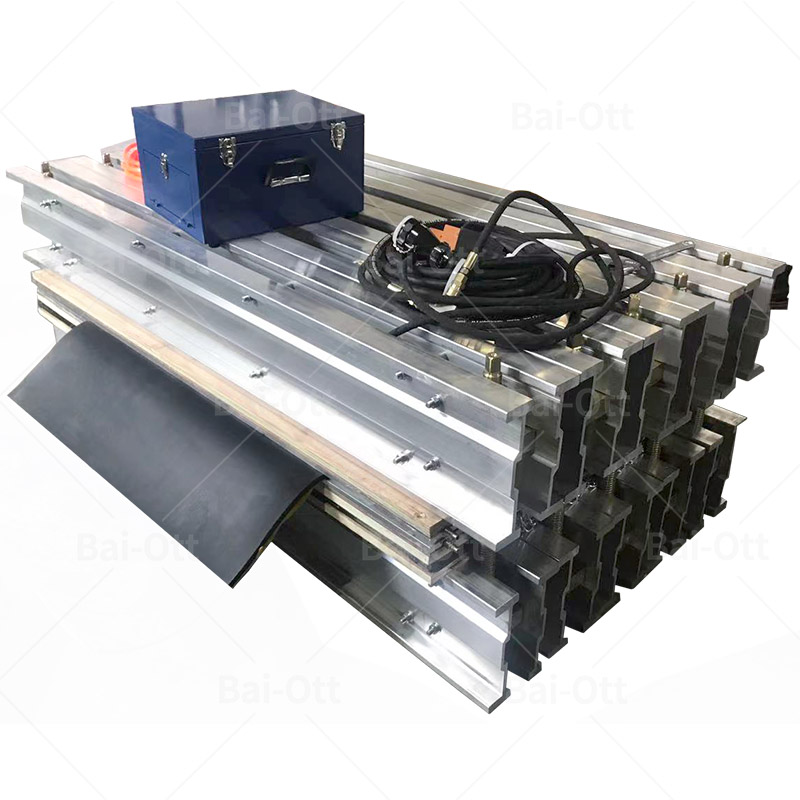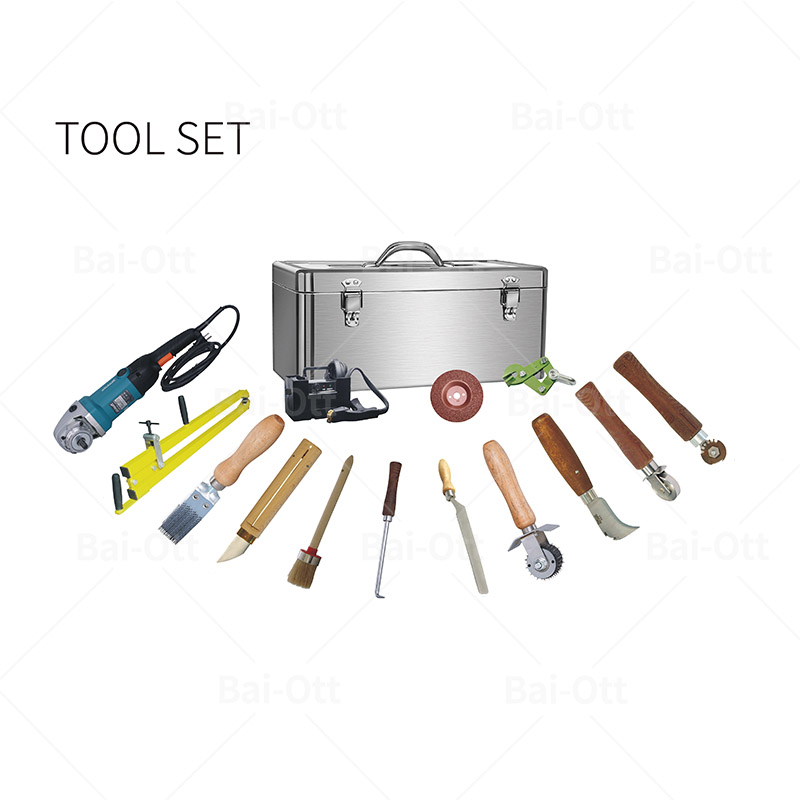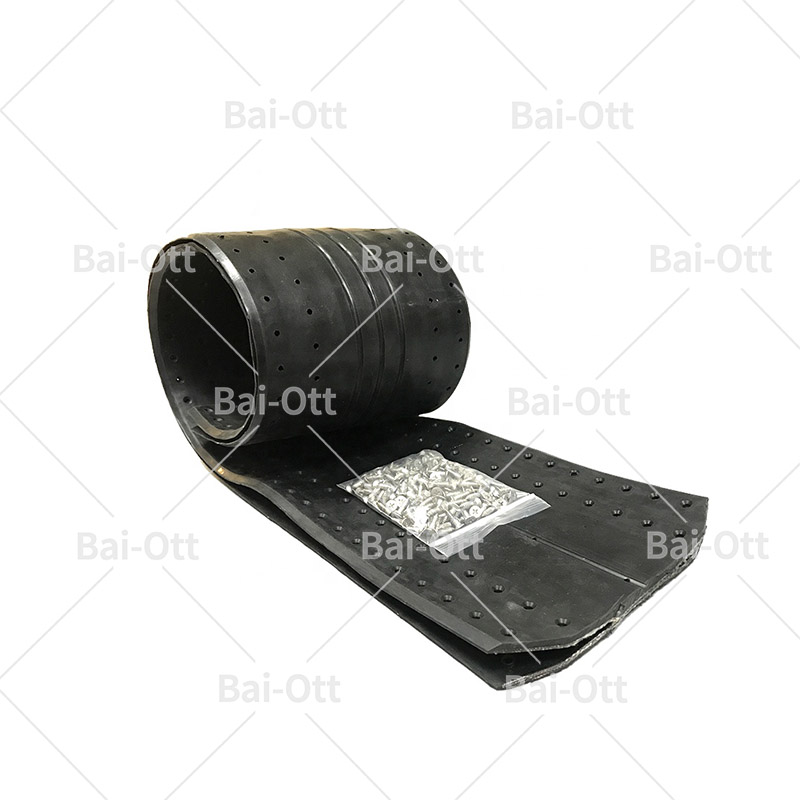What are the tools for repairing conveyor belt joints?
This question depends on the condition of the joint. That is, for different joint operations, the selected repair tools are slightly different.
There are two commonly used joint methods, namely cold vulcanization joint operation and hot vulcanization joint operation. When the cold vulcanized joint is operated on-site joint processing,large-scale equipment is not required, and the operation is simple and fast.
Commonly required joint tools generally include: ply lifter for layering, angle grinders and grinding discs for layering parts, cleaning brushes for cleaning the buffing parts, and glue brush for applying glue, flat roller for removing excess air, rubber knives for cutting out joints, etc.
Among them, the angle grinder is recommended to use a high-power and low-speed type. Compared with the common grinder, the commonly used L1202 has higher grinding efficiency. When used with a tungsten steel grinding disc, it can effectively prevent the occurrence of rubber aging and prevent damage to the belt itself when grinding.
When the hot vulcanized joint is operated, the vulcanizer needs to be heated and pressurized to deal with it.
The following splicing tools are needed:
1.Hawk ply knife:Shaped like an olecranon, the curved surface of the cutter head is easy to control and force to cut through the rubber layer, gradually separating the fabric and rubber.
2.Don Carlos knife:Shaped like a carving knife, the blade is inserted into the wooden handle, and the length of the blade can be adjusted for flexible cutting rubber use in a small area.
3.Rubber knife:The rubber knife is applied to cut rubber to do splicing work. When you need to remove belt, you can use it to easily finish the work with its feature of sharp blade. The blade is sharp enough to cut off rubber material. The rubber knife can be applied in different areas, such as mining, port, power plant, household application ect.
4.Multi-functional knife:The multi-functional knife is used to cut something off, which has same function as the common knife. Unlike common knife, the multi-functional knife features for multi-sectional blades which cut be snapped. Besides, the blade is changeable.The steel frame makes it hard and long service life. The blade is hard enough for you to cut the materials of rubber, fabric, plastic, paper, nylon ect.
5.Tungsten carbide disc:The tungsten carbide disc is applied to tough rubber surface to do splicing work. When you need to repair belt, you need use it to buff joint surface so as to do the following work. We have different types and sizes for you to choose from. The tungsten carbide disc is used for non-metal materials polishing. The grit will be fine medium and coarse.
6. Glue brush:The glue brush is applied for painting. The brush head is made of synthetic fiber. And the wooden handle make it easy to hold and operate. The glue brush has the features of good softness and elastic, high rate of color,long service life in tough surface, which ensure the best painting result. There is a hanging hole in the wooden handle,no mildew and good looking.
7. Adjustable ply knife:Mainly used for layered belt joints, adjust the protruding size of the blade according to the thickness of each layer of the belt, and will not damage the lower belt after layering.
8. Offset knife:The blade is long and cut something through both sides. The middle of the blade is bent twice, such as a Z-shaped fault. In the layered rubber cutting with a layered drop, the blade can be inserted into the rubber bottom layer and cut in parallel without hurting the fabric layer.
9. Ply lifter:Lift the belt in the condition of without belt stripper
10. Pincer:When used for layering, peel and tear fabric and rubber. The handheld pincer is used to help lift and remove something. When you need to remove something, you need to cut a scratch on the surface, then you can use the pincer to lift the part to do removing job.
11. Vice grip:The vice grip is applied to lift conveyor belt to do splicing work. When you need to remove a layer of belt, you can use it to easily finish the work with its special design.
12. Porcupine roller:Carbon steel needle cones are evenly distributed on the surface of the roller. When the inner air bubble cannot be discharged after the belt is repaired, the needle roller can be used to discharge the gas in the belt without damaging the belt and affecting the strength of the belt, and it can also be directly compacted.
13. Flat roller:In the process of belt repair and bonding, it plays the role of exhausting gas and compacting the bonding surface.
14. Double acting roller:It is used for the compaction of the belt during the cold joint of the conveyor belt or the repair, which can discharge the excess air at the joint of the belt more quickly and ensure the sufficient bonding of the joint.
Repair materials for conveyor belt:
Repair strip and patch are the main materials for repairing conveyor belt locally. Both of them has the features of high strength and good wear resistance. Besides, they replace the rubber well and help bring to work quickly.
1. Repair strip:It contains a semi-vulcanized layer (BL layer), and the adhesive surface is painted with cold vulcanized adhesive SC2002, which is super-bonded with the belt, has high tensile strength, quick repair, easy operation, saves time, and is ready to use after repair. It is suitable for the repair of long-distance scratches, scratches and edge wear of the conveyor belt, the repair of local rubber layer damage, and the sealing of belt cold seamless laps.
2. The patch contains a semi-vulcanized layer (CN layer), which is super-bonded with the conveyor belt. It is easy to operate and can be used immediately after repair. According to the size and shape of the damaged area, a patch or a diamond-shaped patch can be selected.






